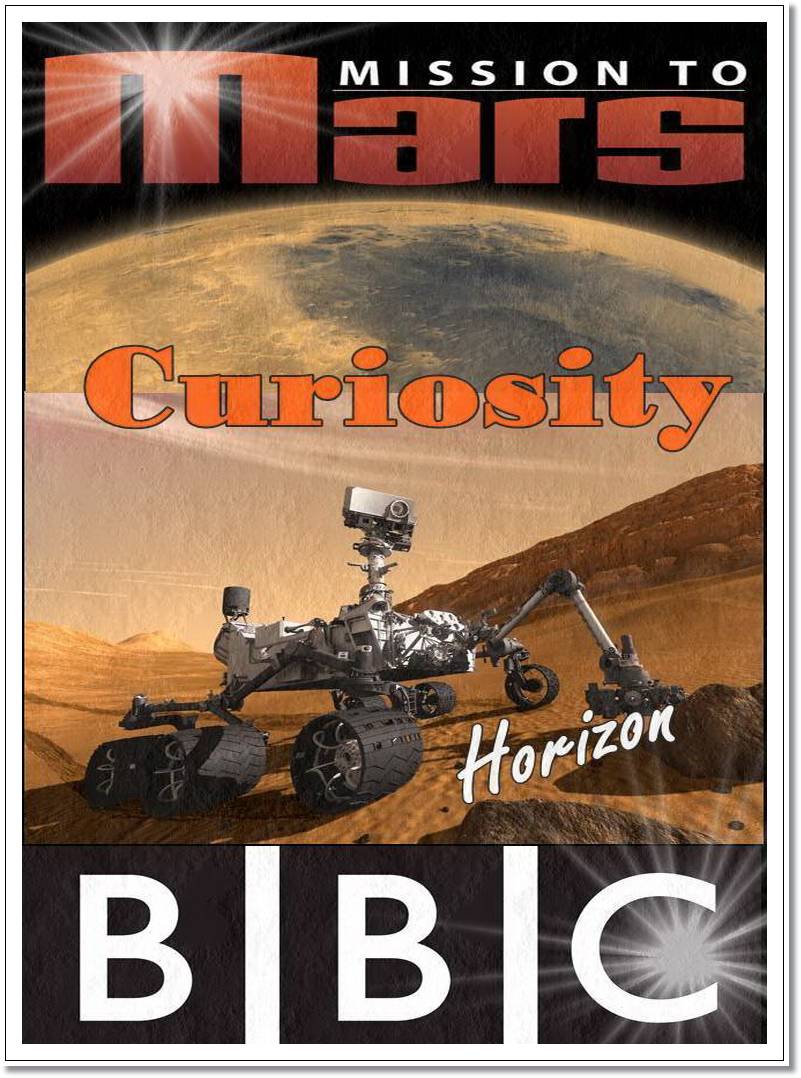Earth & Space | Crime | Environment | Health | History | Nature | Military | War | Politics | Science | Society | Technology | Truth Conspiracy
Mission to Mars
Horizon goes behind the scenes at Nasa landing of a 2.5 billion-dollar rover on the surface of Mars. The nuclear-powered vehicle - the size of a car - will be winched down onto the surface of the red planet from a rocket-powered crane. That's if things go according to plan - Mars has become known as the Bermuda Triangle of space because so many missions there have ended in failure.
 NASA's Mars rover Curiosity has been exploring the Red Planet just since last August, but the robot has already racked up quite a string of accomplishments. For example, the 1-ton rover has already checked off its primary mission goal, determining that its Gale Crater landing site could have supported microbial life in the ancient past.
NASA's Mars rover Curiosity has been exploring the Red Planet just since last August, but the robot has already racked up quite a string of accomplishments. For example, the 1-ton rover has already checked off its primary mission goal, determining that its Gale Crater landing site could have supported microbial life in the ancient past.
NASA's Mars Curiosity rover has measured a tenfold spike in methane, an organic chemical, in the atmosphere around it and detected other organic molecules in a rock-powder sample collected by the robotic laboratory's drill.
Researchers used Curiosity's onboard Sample Analysis at Mars (SAM) laboratory a dozen times in a 20-month period to sniff methane in the atmosphere. During two of those months, in late 2013 and early 2014, four measurements averaged seven parts per billion. Before and after that, readings averaged only one-tenth that level.
Curiosity also detected different Martian organic chemicals in powder drilled from a rock dubbed Cumberland, the first definitive detection of organics in surface materials of Mars. These Martian organics could either have formed on Mars or been delivered to Mars by meteorites. Organic molecules, which contain carbon and usually hydrogen, are chemical building blocks of life, although they can exist without the presence of life. Curiosity's findings from analyzing samples of atmosphere and rock powder do not reveal whether Mars has ever harbored living microbes, but the findings do shed light on a chemically active modern Mars and on favorable conditions for life on ancient Mars.
| Earth | Mars | |
| Average Distance from Sun | 93 million miles | 142 million miles |
| Diameter | 7,926 miles | 4,220 miles |
| Tilt of Axis | 23.5 degrees | 25 degrees |
| Length of Year | 365.25 Days | 687 Earth Days |
| Length of Day | 23 hours 56 minutes | 24 hours 37 minutes |
| Gravity | 2.66 times that of Mars | 0.375 that of Earth |
| Temperature | Average 57 degrees F | Average -81 degrees F |
| Atmosphere | nitrogen, oxygen, argon, others | mostly carbon dioxide, some water vapor |
| Number of Moons | 1 | 2 |

